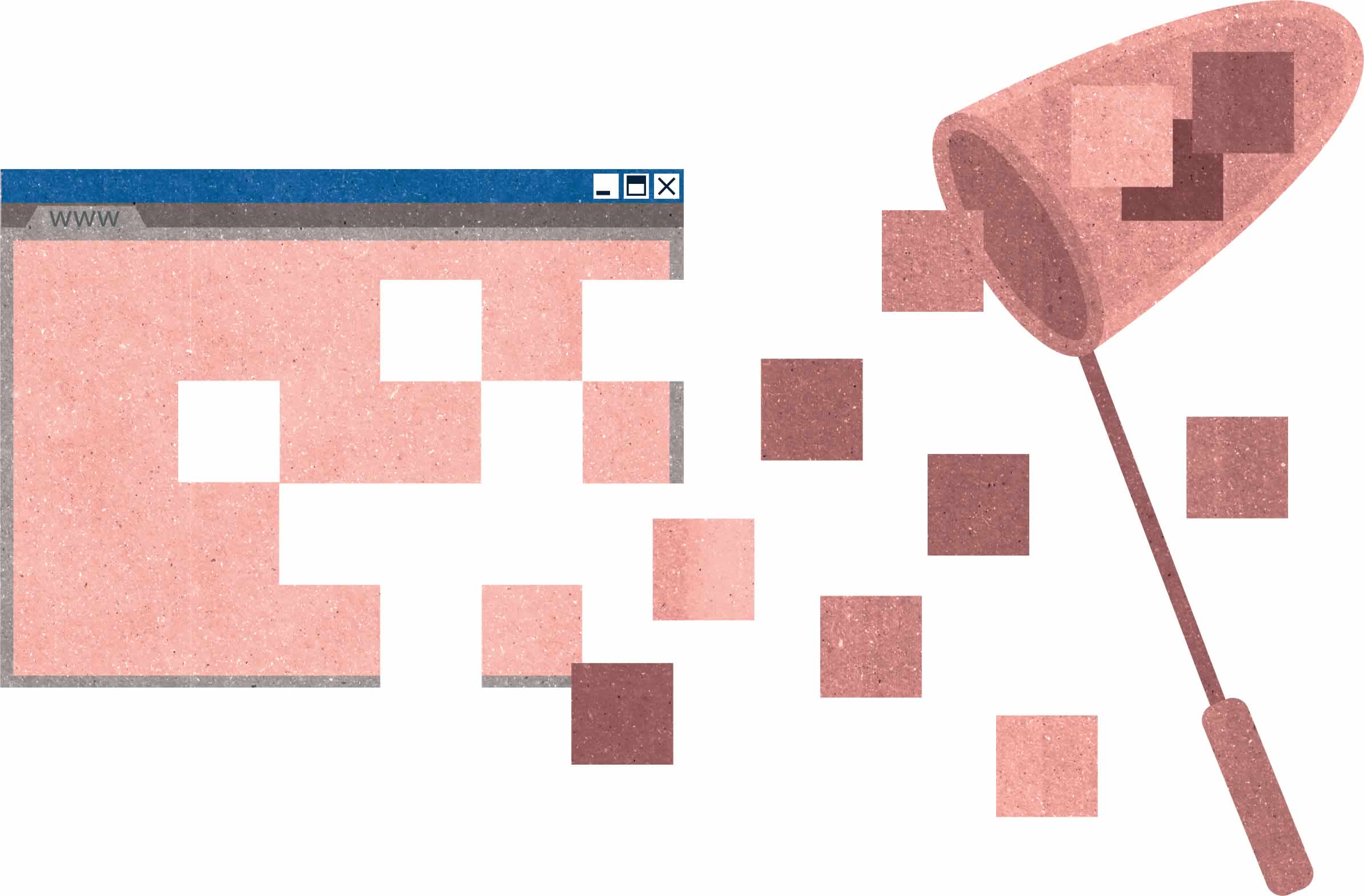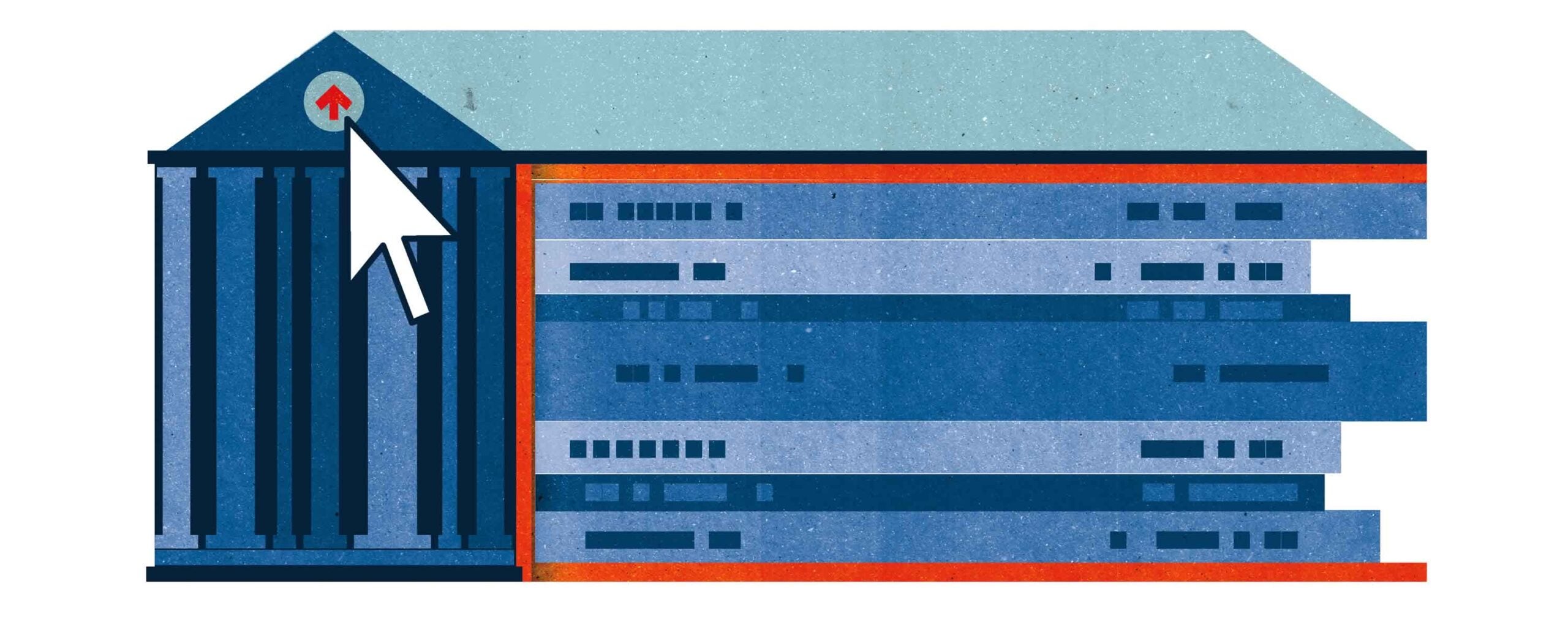To many of us, libraries are where the past resides, not where the future is made. But these traditional realms of the book and the shelf are now more 21st than 12th century. For the strongest case study, look at Harvard Law School and its library, where digital experts are busy inventing the future of textbooks, the classroom and information access.
Meet three:
Professor of Law Jonathan Zittrain ’95 co-founded the Berkman Center for Internet & Society, a celebrated research center within the HLS domain. He is also vice dean for library and information services at the school’s library and holds appointments at Harvard in computer science and public policy.
Kim Dulin practiced law before becoming the HLS Library’s associate director for collection development and digitization initiatives. She oversees many of the experimental enterprises underway in the collective innovation engine that includes the Berkman Center, HLS and its library.
Dustin A. Lewis is Berkman’s project manager for H2O, one of many projects within HLS’s growing digital world.
StackLife
StackLife is an Internet platform that allows users to digitally browse a library’s collection. Call up a title on the website and you get a vertically stacked version of the actual library shelf. You can gauge a book’s popularity by its color: The darker the shade, the more often it has been checked out or put on reserve. The thicker it is, the more pages it has. Users can also click on a title for a menu of subject categories, allowing them to make the sort of serendipitous connections a physical library visit might inspire.
StackLife has been fully deployed at Harvard, which has 73 libraries, 17 million volumes and 40 percent of its holdings tucked away in the Harvard Depository. Although it’s impossible to wander through all the stacks at the university, said Dulin, StackLife makes it possible to browse “almost all the content that Harvard owns.”
The technology is also being tested beyond Harvard’s collection. Use it to browse parts of the Digital Public Library of America, the national digital resource which, like some of Dulin’s and Lewis’ projects, got its start at Harvard’s Berkman Center.
The digital case law repository

This fall, HLS Library digital teams have been digitizing nearly 1 million pages of case law over three months. With the support of the Arcadia Fund, the project uses an “enterprise”-level scanner—the kind banks and the U.S. Postal Service use—at a scan rate of hundreds of pages a minute. Drawing on the HLS collection of volumes of reported case law, the largest in the country, it will soon make texts dating from the infancy of the United States through 1915 digitally available. It’s a pilot project, said Lewis, but the future aspiration is to “make publicly and freely available” all reported state and federal case law. Once digitized, the volumes of the texts that represent “the original version of the law itself,” said Lewis, are likely going to be vacuum-sealed and placed in perpetual archival custody. “Our digital copies,” said Dulin, “will, we hope, function as surrogate official copies.”
H2O

H2O is an online platform intended to replace heavy and expensive legal casebooks with digital versions that are free, weigh nothing and can be read on any Web-enabled device. “There’s a huge cost savings,” said Lewis, as well as a chance for professors to tailor content and for students to annotate the texts in a way that can be either private or shared. This semester has seen a large increase in the use of H2O at HLS, after a trial beginning last semester. Of the students surveyed in two of those trial classes, 79 percent said they preferred the digital H2O casebook to a traditional print casebook.
Thirteen HLS professors are slated to use H2O, along with a dozen others at 10 law schools nationwide. Professors can add, annotate or hide text, creating what Zittrain calls a “playlist” of customized material under a Creative Commons license. “The hope,” said Lewis, “is that it really diversifies the textbook environment.” H2O already improves access for students with print disabilities and establishes a textbook architecture readily adapted to other disciplines. “So far we focus on the law,” said Lewis. “We are keen to reach into other domains as well.” H2O also allows the inclusion of audio, image, PDF, video files and links. Digital casebooks can use multimedia resources like the Oyez Project, the archive of Supreme Court deliberations.
Perma.cc

Perma.cc takes on a big job: preventing “link rot,” a term for what happens to URLs that no longer work. “This is a problem everywhere,” said Dulin, “but in the law we have it in spades.” One survey, directed by Zittrain, revealed that in one 12-year span, the rate of link rot was 70 percent. URLs for Supreme Court cases often rot within a year. “This is a legal problem,” said Lewis. “It is also a civic problem.”
“These projects share the ideal that scholarly work and its sources should be readily and permanently available.”
Jonathan Zittrain
The Perma.cc solution: Take a screen shot of a Web page at the time it was cited, and then assign it a permanent URL maintained by HLS and a network of digital repositories. “We’re copying content and we’re caching it,” said Dulin. University of Oxford’s Bodleian Library has already signed on, along with the University of Melbourne. There are similar Internet archives out there, she added, but Perma.cc—which had a Sept. 6 soft launch—is focused on the law. “The Bluebook,” which systematizes legal citation, may include a Perma.cc rule in its 2014 edition. (Its editors, said Dulin, have agreed “in principle” to do so.)
“These projects share the ideal that scholarly work and its sources should be readily and permanently available,” said Zittrain. “Networked universities and libraries can unite to make that happen.” That way, he added, they “become a vital part of the Internet ecosystem in whose founding they played such a central role.”
Digital innovations in the law today will shape change in a wider world tomorrow, said Dulin. The new information age will benefit from textbooks with flexible content, virtual browsers, protocols for digitizing core documents and strategy for conserving fragile URLs. “Some still think bricks and mortar are the library,” she said. “That’s an impoverished view. Harvard is making the future here.”
